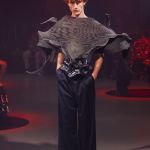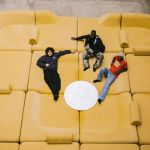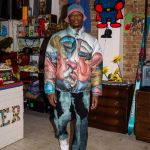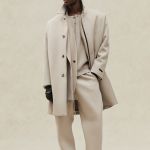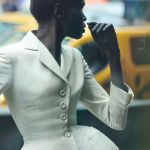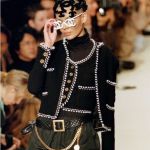
Why so many brands are showing in the U.S.
To quote William Goldman: «Follow the money»
April 11th, 2022
The announcement that Louis Vuitton will show its Cruise 2023 collection at the Salk Institute in San Diego next May 12, the same place where a Dior campaign was shot in January, is just the latest in a string of similar decisions by major brands that have chosen to present their collections in America. Next May 21, Balenciaga will bring its SS23 show to New York while a few days earlier, on May 19, Dior Homme will show its SS23 collection in Los Angeles. Also this year, four weeks ago, it was Alexander McQueen who showed in New York - a trend started by Gucci and its November Love Parade on the Hollywood Walk of Fame in Los Angeles. This focus on the United States and California specifically may be the result of a confluence of several factors: nominally, the growing role of Los Angeles as a hub for new generations of designers, from veterans such as Jerry Lorenzo and Eli Russell Linnetz to young emerging professionals; the increasingly decisive importance of the American market in the global dynamics of the luxury industry on the sales side; the rise of a very close synergy between the fashion industry and the American celebrity industry; but also the current prolonged lockdown in China that has recently seen in megacities such as Shanghai millions of people return to isolation at home.
On a purely economic level, in fact, as Miles Socha writes on WWD, «in July, Kering said retail sales at its luxury houses soared by 263 percent year-on-year in the second quarter in North America, with brands led by Gucci gaining traction with all age groups. Likewise, LVMH Moët Hennessy Louis Vuitton saw Q2 sales in the U.S. more than double in the second quarter and 60 percent in the first half, almost equaling growth in Asia, excluding Japan, where revenues rose 70 percent during the first six months of the year». This boom in sales of luxury products in the United States is also the result of growing economic inequality, greater even than that seen during the 1920s and the era of The Great Gatsby, if one is to believe economist Gabriel Zucman that this inequality «Inequality has increased more in the US than other developed countries». At the same time, as Jing Daily wrote last March about the Chinese market: «Currently facing the largest surge in infections since the outbreak, parts of China are back in lockdown. Unlike Western countries such as the US and UK which have chosen to open up, China is choosing to shield its citizens. And luxury is, again, impacted: share prices at LVMH, Kering, and Hermès have all declined as cases have spiked».
From a cultural point of view, however, the fashion world has continued to look to America since the beginning of the lockdown - the new wave of American aesthetics has combined events such as the Met Gala and the Oscars into one big phenomenon; the return of trends such as cowboy boots, varsity jackets and in general the "high school" aesthetic and the planetary success of series such as Euphoria as well as brands that court the aesthetics of teen dramas from twenty years ago or explore a nostalgic Americanness as Ralph Lauren recently did in New York. The growth in importance of the role of post-Hollywood celebrities, those whose fame emulates that of movie stars but does not derive from the traditional studio system, by now in crisis, has also played a fundamental role in fuelling a return to the glamour of Made in USA glamour, even if in a new cosmopolitan and international key - controlled less by the studios and more by the brands themselves in their new role as cultural institutions. This relationship between brands and celebrities has become increasingly close: just think of the growing importance that figures like Kim Kardashian or Justin Bieber, both residents of Los Angeles, have had in recent Balenciaga campaigns; or the relationship between Jared Leto and Gucci; or the fact that all the top models of the moment, from Bella and Gigi Hadid to the entire Jenner clan, come from America.













































